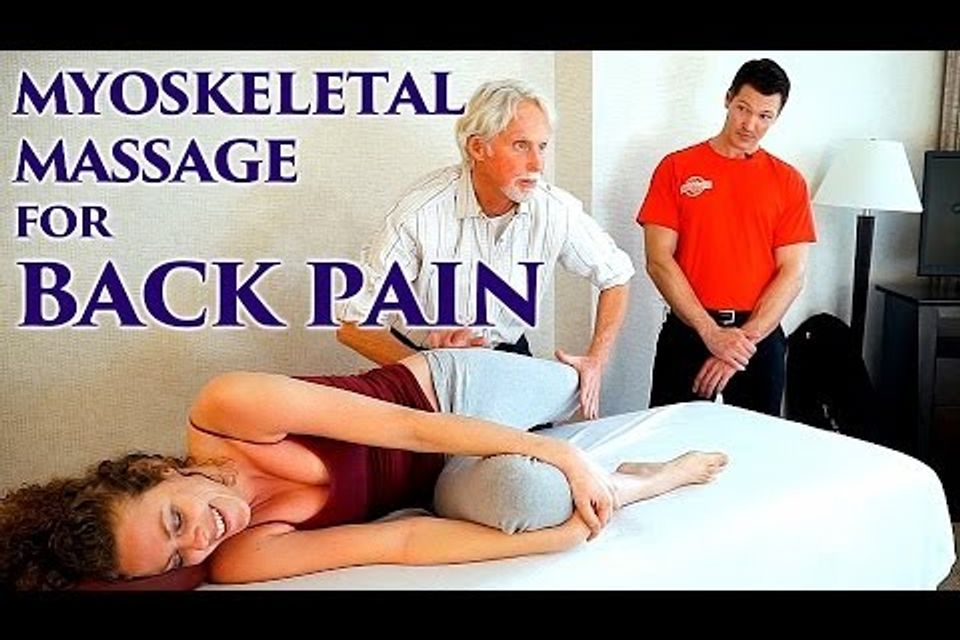
MYOSKELETAL ALIGNMENT
Myoskeletal Alignment is a term developed and coined by Erik Dalton, PhD, in the early 80s after seeing a need for a more integrative perspective on pain science as it applies to the human body.
Eric spent years studying under legendary body work teachers Ida Rolf (Rolfing) for massage and Dr. Phillip Greenman for osteopathy where he also met Dr. Vladimir Janda who had conducted research showing that certain muscle groups got tight while other muscle groups went weak when placed under the same stress.
It meant that certain groups of muscles are always involved in common strain patterns such as rounded shoulders, forward head and excessive lordosis of the low back. In order to get these patterns back in the proper alignment specifiic groups of muscles need to be strengthened while others are relaxed. This broke with the traditional model of massage which typically relaxed all the muscles when some of them actually should have been toned.
Erik took the best of the three and combined the principles of Rolfing, massage and osteopathy to develop Myoskeletal Alignment Techniques (MAT). MAT works on ligaments, tendons, fascia and bones as well as muscles to realign the body. Dalton developed a method of using the bony vertebrae of the spine as levers to work on the tiny muscles in between the vertebrae that cannot be reached in traditional massage.
What is Myoskeletal Alignment Techniques?
The source of chronic pain for many arises from very common imbalances and dysfunctional patterns in the musculoskeletal system. Most chronic pain can be relieved with a combination of skilled manual therapy and intelligent corrective exercise.
The Myoskeletal Alignment Technique (MAT) system brings together the most advanced therapeutic strategies to relieve, and ultimately correct, patterns in the body that lead to pain and deterioration. With MAT therapy, clients can reduce pain, avoid invasive surgery and toxic pain medications. Practitioners build a loyal clientele and lucrative businesses.
The human body is comprised of structural systems, such as the anatomy of bones, connective tissue and nerves, as well as functional systems, such as the neural signals that trigger muscular contraction. These systems are inseparably connected in a continuous feedback loop. Without a thorough understanding of how these systems work together, most common musculoskeletal complaints are incorrectly assessed and treated.
What Myoskeletal Therapy Does for Clients
How Does MAT Work?
Call (513) 324-3211
Eric spent years studying under legendary body work teachers Ida Rolf (Rolfing) for massage and Dr. Phillip Greenman for osteopathy where he also met Dr. Vladimir Janda who had conducted research showing that certain muscle groups got tight while other muscle groups went weak when placed under the same stress.
It meant that certain groups of muscles are always involved in common strain patterns such as rounded shoulders, forward head and excessive lordosis of the low back. In order to get these patterns back in the proper alignment specifiic groups of muscles need to be strengthened while others are relaxed. This broke with the traditional model of massage which typically relaxed all the muscles when some of them actually should have been toned.
Erik took the best of the three and combined the principles of Rolfing, massage and osteopathy to develop Myoskeletal Alignment Techniques (MAT). MAT works on ligaments, tendons, fascia and bones as well as muscles to realign the body. Dalton developed a method of using the bony vertebrae of the spine as levers to work on the tiny muscles in between the vertebrae that cannot be reached in traditional massage.
What is Myoskeletal Alignment Techniques?
The source of chronic pain for many arises from very common imbalances and dysfunctional patterns in the musculoskeletal system. Most chronic pain can be relieved with a combination of skilled manual therapy and intelligent corrective exercise.
The Myoskeletal Alignment Technique (MAT) system brings together the most advanced therapeutic strategies to relieve, and ultimately correct, patterns in the body that lead to pain and deterioration. With MAT therapy, clients can reduce pain, avoid invasive surgery and toxic pain medications. Practitioners build a loyal clientele and lucrative businesses.
The human body is comprised of structural systems, such as the anatomy of bones, connective tissue and nerves, as well as functional systems, such as the neural signals that trigger muscular contraction. These systems are inseparably connected in a continuous feedback loop. Without a thorough understanding of how these systems work together, most common musculoskeletal complaints are incorrectly assessed and treated.
What Myoskeletal Therapy Does for Clients
- Relieves chronic pain contributing to weak posture
- Releases trapped nerves from tight muscles, joints and ligaments
- Corrects atrophy, weakness and muscle amnesia in head-forward postures
- Addresses breathing disorders caused by a drooping ribcage
- Lessens pain sensitivity through graded exposure assisted stretching
- Eliminates protective muscle guarding due to joint dysfunction
- Improves sleep by lowering sympathetic nervous system tone
- Creates dynamic, confident posture with innovative restorative techniques
- Corrects sports-related tendon and joint injuries
- Enhances athletic performance through hands-on proprioceptive training
- Changes the brain’s mind about pain through targeted exercise advice
- Prevents chronic neck and back pain due to tension, trauma & weak posture
How Does MAT Work?
- Contract-relax techniques can make the nervous system less threatened by the movement causing pain.
- Active pain-free therapy signals the brain that the previously painful movement is now safe.
- By doing this repeatedly, the nervous system will often start to disassociate the movement from the pain.
Call (513) 324-3211